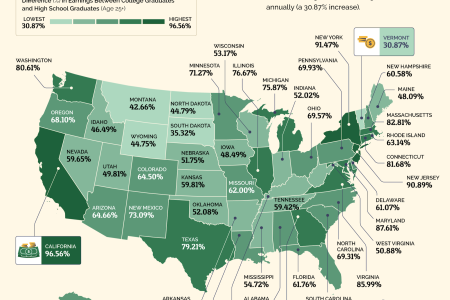Health insurance premiums are increasing annually, at a rate that far outpaces inflation. Both employers and employees are paying more. If this trend continues unchecked, the average family’s health insurance premium will surpass the average wage by 2055.
A common misconception among employers, particularly within small to medium-size businesses, is the notion that a fully insured health plan — where the employer pays premiums to an insurer to cover claims — is their only choice. This often leaves employers believing they have no option but to continuously accept increasing costs, shelling out more money each passing year. While this may have once been the case, the persistent rise in premiums has now tipped the balance, reshaping the landscape of available options.
Historically, self-insurance — where employers take on the risk and handle claims directly — was largely viewed as a feasible strategy for companies employing 500 or more individuals. However, as these plans have evolved and become more adaptable, they now present a tangible opportunity for organizations with even as few as 25 employees. This approach allows employers of all sizes to not only mitigate healthcare expenses but also enhance the benefits they provide.
Related: Healthcare Reform: Self-Funding Pros and Cons
The benefits of self-funded health plans
Self-funded health plans operate on a model where instead of paying premiums, the employer directly funds the healthcare claims for their people. In this structure, actual claims are paid directly to providers via a third-party administrator who manages the process.
This is a contrast to the fully insured models where employers shell out annually for premiums, which include not just the cost of potential claims but also considerable profit margins and markups for the insurance companies. In essence, with self-funding, employers pay solely for the actual cost of claims, steering clear of inflated annual premiums and the hidden costs of insurer profits.
Underwriting techniques have improved over the years, and risk management tools have evolved to the point that smaller businesses are now able to enjoy the freedom and savings that come with a self-funded plan. There are also tax advantages, as self-funding eliminates state premium taxes imposed by carriers.
The concerns of self-funded health plans
The No. 1 reason why small businesses are intimidated by self-insurance is the fear of large claims. Certain medical conditions can generate claims in the millions for a single individual, which obviously most small businesses couldn’t shoulder.
Stop-loss insurance is the safety net that protects employers against any unexpected surge in claims. With these policies, employers can calculate a worst-case scenario for their self-funded plan. When they do, they often find that premiums have risen so sharply that even a worst-case scenario for a self-funded health plan can end up being cheaper than the price of the annual renewal of a fully insured health plan.
When a company shifts from being fully insured to self-funded, employees are often anxious about the ability to keep seeing their providers and receiving their medications. Involving employees in the benefit design process can help reassure them and get them excited about the benefits of self-funding, which can include features such as $0 care/copays for virtual care or navigation lead benefits. Lower costs and better benefits have a way of getting people on the same page.
Related: You Can Cut Employee Health Insurance Costs the Same Way Big Companies Do
Own your own data and take control
Another advantage of self-funded health plans — one that isn’t immediately evident in dollars and cents — is you gain access to your company’s claim data. Companies with fully insured plans have no idea what their actual claim costs were or what types of claims are driving costs up. Was the total cost more or less than the premiums? There’s no way to know.
Oftentimes an employer will get a quote for the first year of a self-funded plan and see little to no difference compared to what they are paying in premiums to an insurance carrier. With the newfound access to claims data, the value becomes crystal clear in the second year, third year and beyond.
Self-funded employers can analyze trends, forecast claim spending and better understand the healthcare needs of their group. It allows a company to optimize, customize and tailor its benefit plan. For instance, if telehealth and virtual care are going to be prominent within the group, tailoring coverage that way is an option.
By tailoring benefits to align with historical usage, employers enhance the likelihood of ending the year with a surplus. While it’s important to prepare for the worst-case scenario, any more favorable outcome means the plan will undershoot the budget — a situation that is unheard of with fully insured plans.
Offering healthcare navigation services can also help lower costs for the employer and members. Benefit navigators help employees find cost-effective care without sacrificing quality. The best way to deal with large claims is to avoid them in the first place.
Level-funded health plans serve as a bridge
While fully insured and self-insured health plans are the two main options on opposite ends of the spectrum, there is something in between. Level-funded plans are a sort of combination of the two that can serve as a bridge for employers to make the transition.
A level-funded plan is set up so an employer makes predictable monthly payments, like with a fully insured plan, but gets a refund at the end of the year if there is a surplus, like with self-insurance.
The regular payments, which cover anticipated claims, the stop-loss premium and administration expenses allow for more predictable expenditures for the company. When end-of-the-year costs are assessed, employers receive a refund if there’s a surplus. If claims exceed the predicted amount, the stop-loss premium will be adjusted upon renewal.
Related: How Small-Business Owners Can Win the Health Insurance Game
The future of self-funding is here
As the benefits of self-funding become increasingly clear to a rising number of employers, there’s no doubt that this market will continue in its momentum forward. The advent of new technologies and member-centric programs are being born out of necessity, ushering in an era of unprecedented efficiency and user experience, while lowering costs.
These advancements are setting a new bar in the industry, empowering employers to take an active role in their healthcare strategy. Employers are at a pivotal moment in history, where the potential to transform healthcare for their employees is within their reach. Working hand-in-hand with their benefit consultants to explore these innovations and stay abreast of the industry trends is no longer an option but a requisite.
The future of self-funding is here, and it’s catalyzing a revolution that promises to redefine employer-sponsored healthcare benefits as we know it.
Read the full article here









